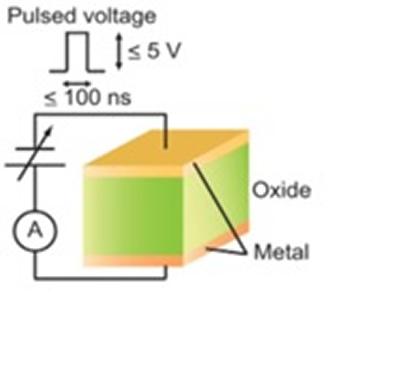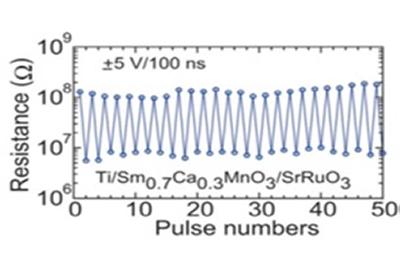
Over the past decade, the memory hierarchy for computing devices has evolved to include NAND flash-based memory in addition to DRAM and hard disk drive. Currently, these memories are approaching their scaling limit. Therefore, urgent development of new technologies is needed.
There are candidate memories that involve introducing new material and a three dimensional structure has been proposed as an alternative to the current system, such as ferroelectric random access memory (FeRAM), which reverses the polarisation of a ferroelectric materials phase change random access memory (PRAM) which uses the change of resistance between crystalline and amorphous states, and magneto resistive random access memory (MRAM) which uses magnetic tunnel junctions. Recently, resistive random access memory (ReRAM) has seen a great interest. This is based on new materials and shows a good resistive switching phenomenon.

Non volatile memory
ReRAM is a type of non-volatile memory that stores data using ions, which can reduce the energy consumption of modern IT systems, while increasing performance. Ions behave on a nanometre scale, and the cell has two electrodes at which the ions dissolve and then precipitate again. This changes the electrical resistance, which can be exploited for data storage.
Resistive random access memory cells have a capacitor like structure composed of insulation or semiconductor materials that are sandwiched between two highly conductive electrodes as shown in Figure1. ReRAM based on a new material, such as metal oxide and organic compound.
By applying an appropriate voltage, the cell can switch from a high resistance state (HRS) to a low resistance state (LRS) depending on the switching and electrode materials (See Figure 2).

These two states can represent the logic values 1 and 0, respectively. Depending on voltage polarity, the resistive- switching behaviour of an ReRAM device is classified as unipolar or bipolar. For unipolar switching, resistive switching is induced by a voltage of the same polarity but a different magnitude, as shown in Figure 3(a). For bipolar switching, one polarity is used to switch from HRS to LRS, and the opposite polarity is used to switch back into HRS, as shown in Figure 3(b).
Our project is about Resistive RAM memory (“High Throughput Screening of Resistive RAM Materials and Structures”), investigating trends (using high throughput) in switching behaviour as a function of intrinsic material composition, and device structure.
[1] Akihito Sawa, Resistive switching in transition metal oxides, Materials Today, June 2008, Vol 11, no. 6
[2] Rainer Waser, Regina Dittmann, Georgi Staikov and Kristof Szot, Redox-based resistive switching memories - nanoionic mechanisms, prospects and challenges, Adv. Mater. 2009, 21, 2632-2663